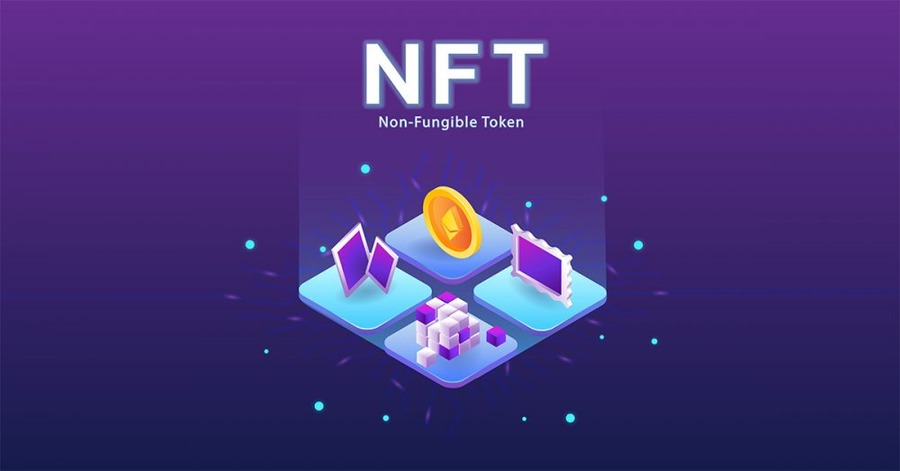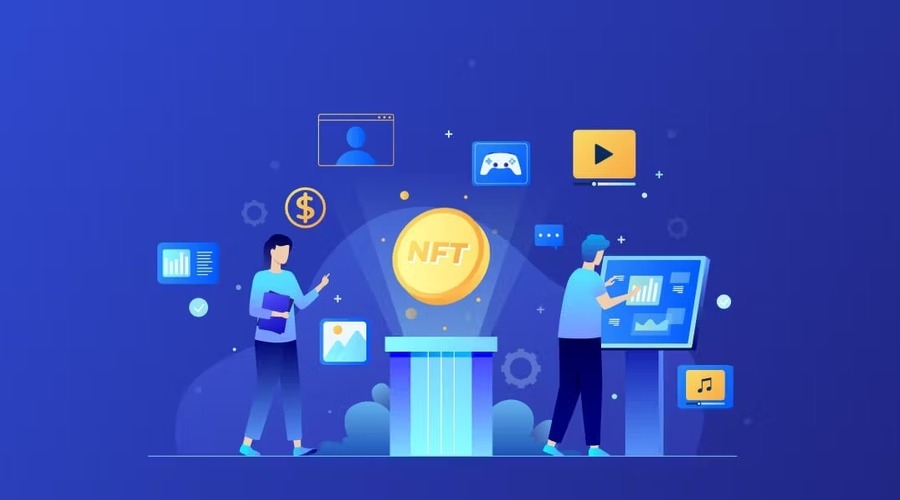Renewable energy initiatives have become increasingly important as the world moves towards a more sustainable future. However, these initiatives require significant investment and funding, which can be a challenge for many organizations. In recent years, blockchain technology has emerged as a potential solution to this problem. By leveraging the unique properties of blockchain, renewable energy initiatives can access funding in new and innovative ways. One such way is through the use of Non-Fungible Tokens (NFTs), which have the potential to revolutionize the way we fund renewable energy projects.
Introduction to NFTs and Renewable Energy
Renewable energy initiatives have gained widespread recognition for their potential to combat climate change and reduce the world’s reliance on fossil fuels. However, these initiatives require significant investment, making them a challenge for many organizations to undertake. This is where blockchain technology comes in. By leveraging the unique properties of blockchain, renewable energy initiatives can access funding in new and innovative ways. One such way is through the use of Non-Fungible Tokens (NFTs), which have the potential to revolutionize the way we fund renewable energy projects.
What are NFTs?
NFTs are unique digital assets that are stored on a blockchain. Unlike traditional cryptocurrencies, such as Bitcoin and Ethereum, which are interchangeable, each NFT is unique and cannot be replicated. This makes NFTs ideal for representing assets such as art, collectables, and renewable energy initiatives.
How do NFTs Support Renewable Energy Initiatives?
NFTs provide a way for renewable energy initiatives to access funding from a broader range of investors. Traditionally, investors in renewable energy initiatives have been limited to institutional investors or high-net-worth individuals. However, by using NFTs, these initiatives can reach a wider range of investors, including retail investors, who may not have had access to these investment opportunities before.
Benefits of Using NFTs for Renewable Energy Initiatives
Increased liquidity
NFTs can be easily bought and sold on blockchain marketplaces, providing a level of liquidity that traditional investments cannot match. This means that investors can easily sell their investments if they need to raise capital, providing a level of flexibility that is not available with traditional investments.
Reduced transaction costs
Blockchain technology eliminates the need for intermediaries, such as banks and brokers, reducing transaction costs significantly. This means that renewable energy initiatives can access funding at a lower cost, which can be passed on to investors in the form of higher returns.
Increased transparency
Blockchain technology provides a high level of transparency, making it easy for investors to track their investments and monitor the progress of renewable energy initiatives. This transparency can help build trust between investors and renewable energy initiatives, which is critical for long-term success.
More inclusive
NFTs can help make renewable energy initiatives more inclusive by opening up investment opportunities to a broader range of investors. This can help democratize investment in renewable energy and promote greater awareness of the importance of sustainable energy.
Case studies

The Solar DAO
The Solar DAO is a renewable energy initiative that uses blockchain technology and NFTs to fund solar energy projects. Solar DAO issued tokens representing ownership in solar panels, allowing investors to earn a share of the revenue generated by the panels. The Solar DAO raised $1.2 million in funding in 2017, demonstrating the potential of NFTs to fund renewable energy initiatives.
The Renewable Energy Token (RET)
The Renewable Energy Token (RET) is a renewable energy initiative that aims to provide funding for renewable energy projects around the world. RET uses blockchain technology and NFTs to tokenize renewable energy assets, providing investors with a new way to invest in renewable energy. The RET project has already funded several renewable energy projects and aims to fund many more in the future.
Challenges and Limitations
- Lack of regulation: As NFTs are a relatively new technology, there is little guidance on how they should be regulated, which could lead to potential risks for investors.
- Limited scalability: NFTs may not be suitable for large-scale renewable energy projects, as the transaction volume may become too high for the blockchain network to handle.
- High energy consumption: Blockchain technology is currently reliant on non-renewable energy sources, which may be at odds with the goals of renewable energy initiatives.
- Market volatility: The value of NFTs can be highly volatile, which may deter investors from investing in renewable energy projects.
- Accessibility: While NFTs can open up investment opportunities to a wider range of investors, not all investors may have the technical knowledge or access to the necessary technology to invest in NFTs.
- Lack of liquidity: While NFTs can provide a level of liquidity that traditional investments cannot match, the market for NFTs is still relatively small and may not offer the same level of liquidity as more established markets.
Overcoming the Challenges of NFTs in Renewable Energy
While NFTs in green energy face challenges and limitations, there are ways to overcome these challenges and make NFTs a more viable funding option for renewable energy projects. Here are some potential solutions:
- Regulation: As the market for NFTs in green energy continues to grow, regulators may develop frameworks for governing these investments, providing greater protection for investors and reducing risks.
- Scalability: NFTs may not be suitable for large-scale renewable energy projects, but they can still be used for smaller projects. Additionally, blockchain technology is constantly evolving, and newer blockchain networks may be better suited for large-scale projects.
- Energy consumption: As blockchain technology transitions to more energy-efficient mechanisms, such as proof-of-stake, the energy consumption of blockchain networks is likely to decrease, reducing the environmental impact of NFTs in green energy.
- Market stability: As the market for NFTs in green energy matures, it is likely to become more stable and less volatile, making it a more attractive investment option for investors.
- Accessibility: Efforts can be made to make NFTs more accessible to investors, such as creating user-friendly interfaces and providing education on how to invest in NFTs.
- Liquidity: As the market for NFTs in green energy grows, liquidity is likely to increase, making it easier for investors to buy and sell their investments.
Role of Blockchain in Renewable Energy
Blockchain technology has emerged as a potential solution to the funding challenges faced by renewable energy initiatives. Blockchain is a decentralized ledger that records transactions in a secure and transparent manner. This makes it an ideal platform for renewable energy initiatives to access funding from a wider range of investors.
Blockchain can help reduce the transaction costs associated with renewable energy investments by eliminating the need for intermediaries, such as banks and brokers. It can also increase transparency by providing a high level of visibility into the investment process, making it easier for investors to monitor the progress of renewable energy projects.
Blockchain can also help renewable energy initiatives address the challenge of financing large-scale projects. By using blockchain to issue tokens representing ownership in renewable energy assets, renewable energy initiatives can raise funds from a large number of investors, each of whom can own a small stake in the project.
The Environmental Impact of Blockchain
While blockchain has the potential to support renewable energy initiatives, it also has a significant environmental impact. Blockchain technology relies heavily on non-renewable energy sources, such as coal and natural gas, to power the computers that validate transactions on the blockchain.
However, there are efforts underway to reduce the environmental impact of blockchain. Some blockchain platforms, such as Ethereum, are transitioning from a proof-of-work consensus mechanism to a proof-of-stake mechanism, which is less energy-intensive. There are also initiatives, such as the Crypto Climate Accord, which aim to make blockchain carbon-neutral by 2040.
Future of NFTs in Renewable Energy
As blockchain technology continues to evolve, so too will the role of NFTs in renewable energy. It is likely that we will see more renewable energy initiatives using NFTs to fund their projects in the future. This could lead to a more inclusive and democratic approach to renewable energy investment, as more people will have the opportunity to invest in renewable energy projects.
As the environmental impact of blockchain is addressed, the use of NFTs in renewable energy could become an even more attractive investment opportunity. It is possible that we will see a convergence of blockchain, renewable energy, and NFTs, leading to a more sustainable and equitable future.
Conclusion
NFTs have the potential to revolutionize the way we fund renewable energy initiatives, providing a new way for investors to access these important investment opportunities. However, there are challenges and limitations that need to be considered, such as the lack of regulation in the NFT market and the environmental impact of blockchain technology.
As blockchain technology continues to evolve, we are likely to see more innovative uses of NFTs in renewable energy, as well as other industries. It is an exciting time for blockchain and renewable energy, as we work together to create a more sustainable and equitable future.
FAQs
- What is a Non-Fungible Token (NFT)?
A Non-Fungible Token (NFT) is a unique digital asset that is stored on a blockchain.
- How can NFTs support renewable energy initiatives?
NFTs can provide renewable energy initiatives with a new way to access funding from a broader range of investors.
- What are the benefits of using NFTs for renewable energy initiatives?
The benefits of using NFTs for renewable energy initiatives include increased liquidity, reduced transaction costs, increased transparency, and greater inclusivity.
- What are some examples of renewable energy initiatives that have used NFTs?
The Solar DAO and the Renewable Energy Token (RET) are examples of renewable energy initiatives that have used NFTs to fund their projects.
- What are the challenges and limitations of using NFTs for renewable energy initiatives?
The challenges and limitations of using NFTs for renewable energy initiatives include the lack of regulation in the NFT market and the high energy consumption of blockchain technology.
I’m a highly experienced and well-respected author in the field of cryptocurrency. I have been involved in the industry for over 5 years and have written extensively on the topic, both for academic and general audiences. I’m highly sought-after as a speaker and consultant on cryptocurrency, due to my in-depth knowledge and understanding of the industry. I’m also a regular contributor to leading industry publications.

